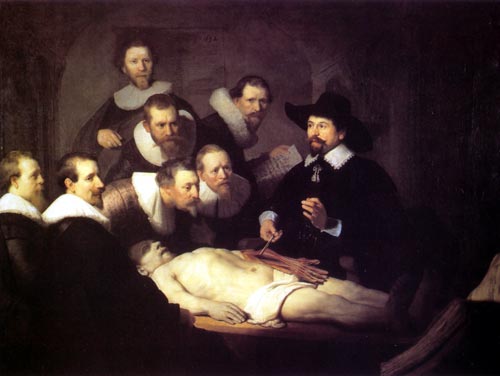
The oil on canvas painting, The Anatomy Lesson of Dr. Nicholas Tulp was drawn by the talented Renaissance artist, Rembrandt, in the year 1632. It illustrates a group of scientist dissecting the body of a burglar who had recently been executed. This painting represents and reflects the culture of the Renaissance, because it shows the progression of scientific knowledge and artistic techniques. Scientific knowledge and discovery is shown through the dissection and study of the dead body. As the people of the Renaissance began to review prior discoveries of the Romans and Greeks, they started to inquire more about the world around them, and questioned the science behind the human body. When the Catholic Church began to loosen the restraints and restrictions of science, scientists were occasionally permitted to expand their research in field of medicine. This led to a better understanding of human anatomy, and instigated more research and development. Rembrandt’s painting not only displays scientific innovation, but it also shows the new methods and techniques of art that were being applied during the Renaissance. The focal point of the painting is the dead body, there is shading and detail on all the men’s’ clothing, and the corpse is anatomically accurate. These new techniques of art enhance the sense of realism and depth in the painting. In the Renaissance, people began to focus on making art look as life-like as possible, and the new styles and techniques led to more interest in patronizing and commissioning artwork. Talented and skilled artist brought attention to specific city-states and initiated rivalry and competition between the different societies. Art eventually became the center of civilization. Through this painting, you can begin to understand the influence the Renaissance’s thriving society had on Europe, and how it was reflected not only through improved artistic methods, but also through the subjects of the paintings.
